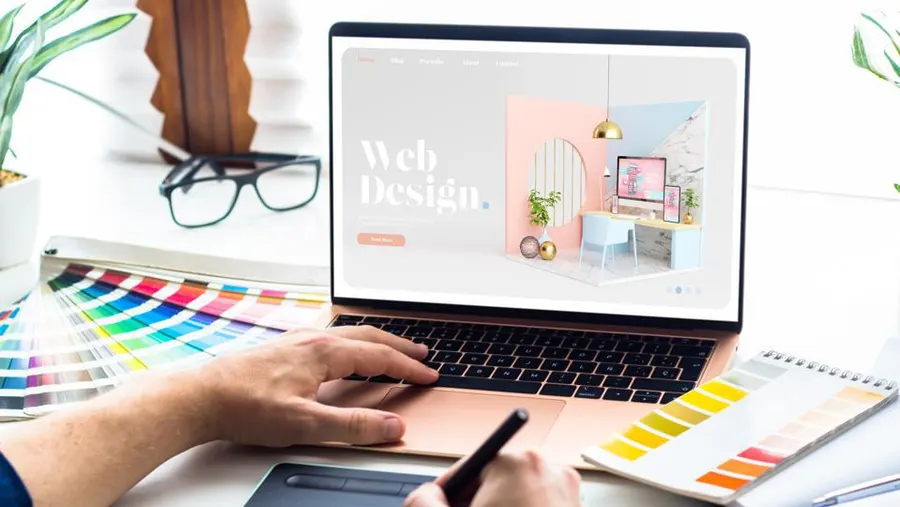To design a website, plan your layout and choose a user-friendly platform. Focus on responsive design and clear navigation.
Creating a website involves several crucial steps. Start by identifying your target audience and the purpose of your site. Select a clean, professional layout that aligns with your brand. Choose a platform like WordPress, Wix, or Squarespace for ease of use.
Ensure your design is mobile-friendly and loads quickly. Incorporate intuitive navigation to enhance user experience. Utilize engaging, high-quality content and images. Implement SEO best practices to improve search engine rankings. Regularly update your site to maintain its relevance and functionality. A well-designed website can significantly boost your online presence and attract more visitors.

Planning Your Website
Set clear goals for your website. What do you want to achieve? Goals could be informing people, selling products, or sharing news. Clear goals help you stay focused. Write down your goals to keep track.
Know your audience. Who will visit your site? Think about their age, interests, and needs. Understanding your audience helps you create content they like. Make your site user-friendly for them. Happy visitors will return often.
Choosing A Platform
Content Management Systems (CMS) help build websites easily. They offer many features. WordPress is a popular CMS. It is user-friendly. Many themes and plugins are available. Joomla is another good option. It is flexible and powerful. Drupal is great for advanced users. It provides high security.
Website builders are simple tools. They are perfect for beginners. Wix offers drag-and-drop features. It is easy to use. Squarespace has beautiful templates. It is ideal for creative projects. Weebly is another option. It is straightforward and user-friendly.
Creating A Layout
A wireframe is a simple sketch of your website. It shows where everything will go. Draw boxes for images, text, and buttons. It helps you plan the structure. Use a pencil and paper or a digital tool. Keep it basic and clear. Focus on the layout first, not the colors or fonts. Share your wireframe with others for feedback.
Prototyping tools help you create a working model. They let you see how the website will look and work. Figma and Adobe XD are popular tools. These tools have drag-and-drop features. They are easy to use. You can make clickable links and buttons. InVision is another great tool. It helps you share your prototype with others. You can get feedback easily.

Design Principles
Colors can make a website look amazing. Bright colors attract attention. Cool colors like blue and green calm users. Warm colors like red and yellow excite users. Neutral colors balance the design. Using complementary colors makes the design stand out. Analogous colors create harmony. Triadic colors offer variety.
Fonts are important for readability. Serif fonts are classic and traditional. Sans-serif fonts look modern and clean. Script fonts feel elegant. Monospace fonts are technical. Mixing fonts should be done carefully. Too many fonts confuse users. Font size matters. Bigger fonts are easier to read.
User Experience
Good navigation makes a website easy to use. Use simple menus that are easy to find. Make sure links are clear and direct. Avoid using too many links in one place. Group related pages together. This helps users find what they need faster. Always have a clear home button. It helps users return to the main page quickly.
Responsive design means your website works on all devices. Use flexible layouts that fit different screen sizes. Images should resize automatically. Text should be readable on small screens. Avoid using fixed sizes for elements. Test your website on phones and tablets. This ensures a good user experience everywhere.
Content Strategy
Use short sentences and simple words. Break text into small chunks. Use headers to guide the reader. Bullet points are great for lists. Bold important words. Keep paragraphs short and to the point.
Images grab attention quickly. Use high-quality pictures. Videos can explain better than text. Infographics make data easy to understand. Visuals should match the text. Avoid clutter on the page.
Seo Best Practices
Finding the right keywords is very important. Use tools like Google Keyword Planner. Look for keywords with high search volume and low competition. Include these keywords naturally in your content. This helps in improving search engine rankings. Avoid overstuffing keywords as it can hurt your ranking.
Ensure your website has a clear structure. Use title tags and meta descriptions effectively. These should contain your main keywords. Make sure to use header tags properly. Headers help search engines understand your content. Optimize your images with alt text. Alt text should describe the image and include keywords. Ensure your website is mobile-friendly and loads quickly. Search engines prefer fast and mobile-friendly sites.
Testing And Launching
Testing and launching ensure your website functions seamlessly across devices. Conduct thorough checks for responsiveness and usability. Finally, deploy the site for public access.
Usability Testing
Usability testing checks if your website is easy to use. Test with real users. Watch how they interact with your site. Fix any problems they find. This ensures a smooth experience for everyone. User feedback is crucial. It helps in making necessary changes. Always aim for a user-friendly design.
Performance Monitoring
Performance monitoring tracks your website’s speed. Slow sites can lose visitors. Use tools to check load times. Fix issues that slow down the site. Regular monitoring keeps your site running fast. Happy users stay longer. A fast website also ranks better on search engines. Always keep an eye on performance.
Frequently Asked Questions
How Can I Design My Own Website?
To design your own website, choose a website builder or CMS, select a template, customize it, and publish.
What Are The 7 Major Steps To Designing Website?
The 7 major steps to designing a website are: 1. Define your goals. 2. Research your audience. 3. Plan your site structure. 4. Create wireframes. 5. Design the visual elements. 6. Develop the website. 7. Test and launch.
How Much Does It Cost To Build A Website?
Building a website typically costs between $500 and $5,000. The price varies based on design, functionality, and developer rates.
Can I Design A Website For Free?
Yes, you can design a website for free using platforms like WordPress, Wix, or Weebly. Free plans offer basic features.
Conclusion
Creating a well-designed website requires planning, creativity, and user-focused decisions. Prioritize simplicity and functionality. Use engaging visuals and intuitive navigation. Always test your design on multiple devices. Keep learning and adapting to new trends. A user-friendly website can significantly enhance your online presence and success.



